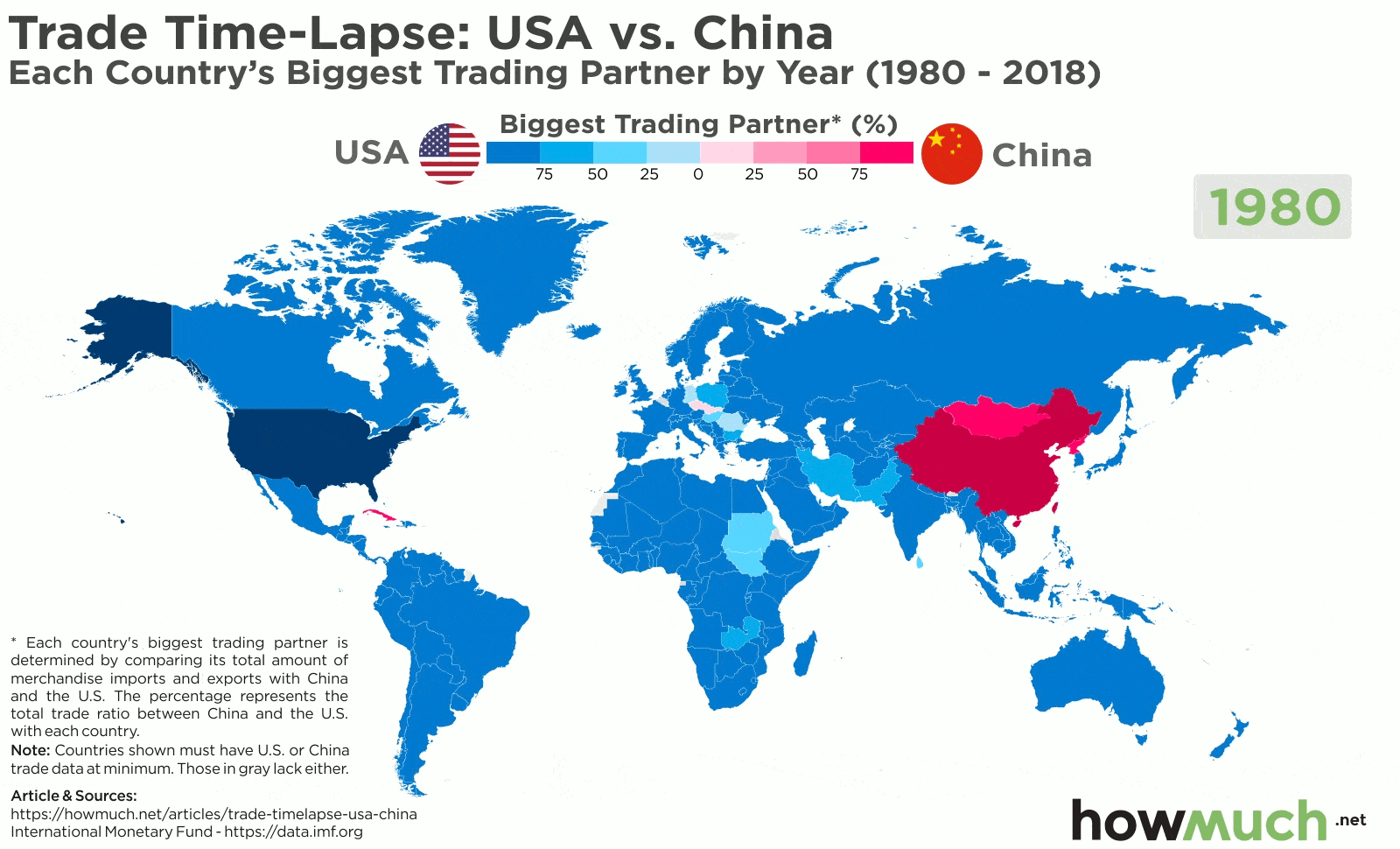China's Trade War Strategy: Obscuring Economic Realities From America

Table of Contents
State Control and Data Manipulation
China's government exerts significant control over data release, making independent verification difficult. This opacity allows for selective reporting that minimizes the negative impacts of trade conflicts, a key component of China's trade war strategy.
Opacity of Economic Data
China's economic data often lacks the transparency seen in many Western economies. This lack of transparency makes it challenging to accurately assess the true impact of trade wars and other economic policies.
- Selective release of positive economic indicators: The government often highlights positive growth figures while downplaying or delaying the release of negative data, creating a skewed picture of economic performance.
- Lack of transparency in state-owned enterprise (SOE) performance: SOEs play a significant role in the Chinese economy, but their financial data is often not publicly available, hindering accurate economic analysis.
- Difficulty accessing reliable data on specific sectors: Obtaining granular data on sectors heavily impacted by US tariffs, such as manufacturing and agriculture, is particularly challenging, making it difficult to understand the true extent of the economic damage.
- Manipulation of GDP figures: Accusations of manipulating GDP figures to present a rosier picture than reality have persisted for years, casting doubt on the reliability of official economic statistics.
Controlling the Narrative
Through state-controlled media and strategic messaging, China actively shapes the international perception of its economic strength and resilience, even in the face of significant trade challenges. This narrative control is a crucial part of its overall trade war strategy.
- Promoting narratives of continued growth and economic stability: State-run media consistently emphasizes positive economic trends, portraying an image of unwavering growth and stability.
- Emphasizing resilience and self-sufficiency: The government frequently promotes the narrative of China's resilience in the face of external pressures, highlighting its ability to overcome challenges and achieve self-reliance.
- Downplaying the impact of tariffs and trade restrictions: Negative consequences of tariffs and trade restrictions are often minimized or dismissed in official statements and media reports.
- Countering negative reporting from international media outlets: China actively counters negative reporting from international media outlets, attempting to discredit critical analyses of its economic policies.
Diversification and Strategic Partnerships
To mitigate the impact of US tariffs, China actively diversifies its trade partners and strengthens its domestic economy. This dual approach is a key element of its overall trade war strategy.
Shifting Trade Relationships
China's strategy involves reducing its reliance on the American market by forging stronger trade relationships with other countries.
- Increased trade with countries in Asia, Africa, and Latin America: China has significantly increased trade with countries across these regions, creating new markets for its exports and sourcing raw materials and intermediate goods.
- Development of regional trade agreements such as RCEP (Regional Comprehensive Economic Partnership): Participation in regional trade agreements helps diversify trade relationships and reduce dependence on any single market.
- Investments in infrastructure projects in developing countries (Belt and Road Initiative): Massive investments in infrastructure projects in developing countries strengthen economic ties and create new markets for Chinese goods and services.
Strengthening Domestic Demand
By focusing on domestic consumption and investment, China aims to lessen its reliance on exports.
- Incentives for domestic consumption and investment: The government implements various policies to stimulate domestic demand, including tax breaks and subsidies.
- Development of domestic industries and supply chains: China actively promotes the development of domestic industries and supply chains, reducing its reliance on foreign inputs.
- Reduction in reliance on foreign technology and intellectual property: Through increased investment in R&D and technological innovation, China aims to reduce its dependence on foreign technology.
Technological Advancement and Innovation
China's focus on technological self-reliance and innovation is a vital aspect of its long-term strategy, aimed at reducing vulnerability to external pressures.
Self-Reliance and Technological Independence
China's massive investment in research and development is aimed at achieving technological independence.
- Massive investment in research and development: Significant government funding is channeled into R&D across various sectors, fostering technological innovation.
- Development of domestic technological champions in key sectors: China is actively nurturing domestic technology companies to compete globally, reducing reliance on foreign firms.
- Initiatives to reduce reliance on foreign semiconductors and other critical technologies: Government initiatives aim to achieve self-sufficiency in key technological areas, mitigating the impact of potential sanctions.
Strategic Investments in Emerging Technologies
China is aggressively investing in emerging technologies to create new economic growth drivers.
- Government funding and support for high-tech industries: Generous government funding and support are crucial for the growth of high-tech industries such as AI, 5G, and renewable energy.
- Acquisition of foreign technology and talent: China has actively pursued acquisitions of foreign technology companies and recruitment of skilled foreign workers.
- Development of national standards and technologies: China is developing its own national standards and technologies to reduce its dependence on foreign systems.
Conclusion
China's trade war strategy is a multifaceted approach combining data manipulation, strategic diversification, and technological advancement to obscure the true extent of economic impacts. While the effectiveness of these strategies is a subject of ongoing debate, they highlight China's determination to maintain economic growth and influence on the global stage. Understanding these strategies is crucial for accurately assessing the economic realities of China and its relationship with the US. Further research into China's trade war strategy and its effectiveness is needed to better understand the evolving global economic landscape. Continue exploring the complexities of China's economic policies to stay informed about this critical geopolitical relationship and the implications for future trade relations.

Featured Posts
-
 Uk Glastonbury Festival 2024 The 1975 And Olivia Rodrigo Lead The Lineup
May 02, 2025
Uk Glastonbury Festival 2024 The 1975 And Olivia Rodrigo Lead The Lineup
May 02, 2025 -
 Mental Health Care A System In Need Of Reform
May 02, 2025
Mental Health Care A System In Need Of Reform
May 02, 2025 -
 Phipps Australian Rugbys Dominance Questioned
May 02, 2025
Phipps Australian Rugbys Dominance Questioned
May 02, 2025 -
 Trumps Ripple Connection How A Presidential Post Boosted Xrp
May 02, 2025
Trumps Ripple Connection How A Presidential Post Boosted Xrp
May 02, 2025 -
 Rossiya I Chekhiya Ukreplyayut Ekonomicheskie Svyazi
May 02, 2025
Rossiya I Chekhiya Ukreplyayut Ekonomicheskie Svyazi
May 02, 2025
